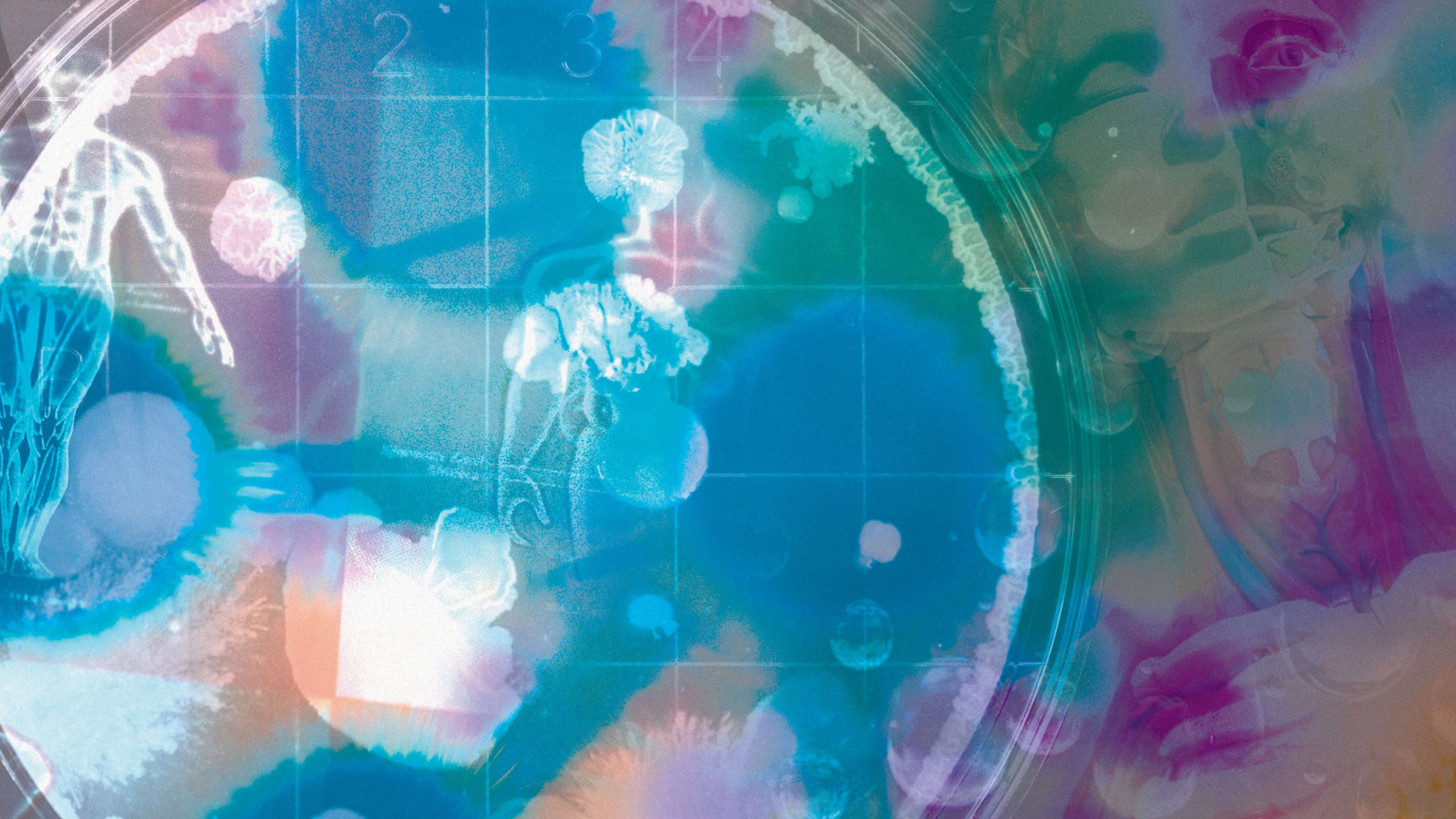In a darkened San Diego conference hall, the disco lights pulse as Mike Posner’s club hit “I Took a Pill in Ibiza” blares. At the doors, a dozen greeters high-five the parade of 1,000 streaming into the space. On a stage in the front, a 20-foot-tall canvas of two mysterious eyes interlaced in an infinity symbol stare out— like an LSD version of Gatsby’s iconic Doctor T.J. Eckleburg. Inside the eyes are two hourglasses.
But this not a millennial rave: Most of the crowd is well over 60, dressed in their casual best—men in belted chino shorts and tucked-in polo shirts, others in dinner jackets; the women with Hermès scarfs and at least a few with breast implants and lip fillers. Every so often, someone rolls by in a motorized wheelchair.
They are here for the third annual RAADfest, the largest gathering of researchers, scientists, technologists, and consumers of cutting-edge ways to stop—and potentially reverse—aging.
Organized by the Coalition for Radical Life Extension, the three-day RAAD (Revolution Against Aging and Death) convention is a semi-science fair for medical professionals who fall outside the norm of mainstream medicine. Dr. Bill Andrews, a leader in the groundbreaking science of telomere biology and one of the speakers, says it’s “where biotech meets Woodstock.” Here, aging is referred to as an unnecessary evil—and a preventable enemy.
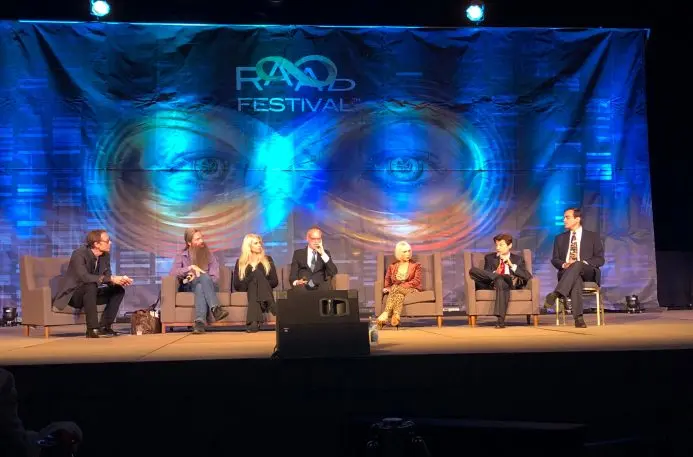
On opening night, 30 men and women from ages 40 to 70 take the stage in workout gear. Europe’s “The Final Countdown” roars as they begin bootcamp push-ups and jumping jacks before stripping down—the women to sports bras and men shirtless.
As they flex, a British voice declares: “The revolution is over. We have brought ourselves to a future free of aging and death.”
The crowd hollers and claps wildly. Some whistle, while others shake their head as if to signal, This is wild, ain’t it? For a moment, I contemplate whether I’m trapped in the sequel to Get Out.
The aspirations are high, with some here deadly serious about pushing back death. When the 82-year-old cofounder of the physical immortality group People Unlimited takes the stage to welcome everyone, she declares the mission at hand.
“We’ve come together with real purpose in mind, and that’s outliving death,” says the woman, who goes simply by the name Bernadeane. “I’m radical about everything that has do with staying alive. I’m radical against aging and death.”
With a hint of emotion, she adds, “I don’t think we deserve it. We should live abundantly—forever.”
Heaven on earth
James Strole and Bernadeane are the cofounders of People Unlimited—a social group for life-extension enthusiasts—as well as co-directors of the Coalition for Radical Life Extension, which produces RAADfest. They are the face of this nonconventional movement, its Jay-Z and Beyoncé.
The couple have been together for four decades. He dons fashionable Italian loafers and slim-cut suits, and she rocks leopard-print leggings, high heels, and a platinum bob. They look like they’re on vacation in Cannes.
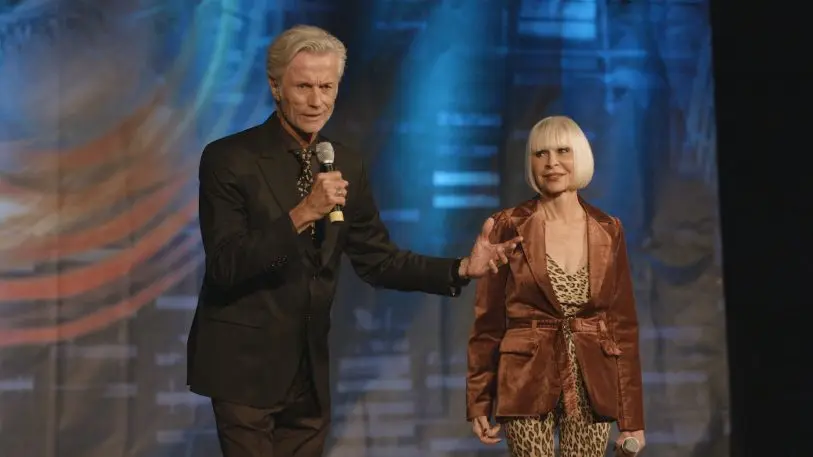
“I said: ‘Why do we have to die to go to heaven? Why can’t we have heaven on earth?'” Strole recounts. “I had that [curiosity] in me all my life.”
Strole eventually fell into the family’s real estate investment firm but funneled his earnings toward a “cure” for aging, he says. At most, 125 years is the biological barrier for humanity, he believes. The Social Security Administration, meanwhile, puts American life expectancy at 84.3 years old. To expand beyond the norm, scientific innovation would be crucial, which is how RAADfest was born in 2016.
“We’re not doctors or scientists,” concedes Strole. “We’re visionaries and activists . . . We’re good at galvanizing people, creating collaboration.”
The conference focuses less on the founder’s ultimate mission—immortality—and more on the incremental wins against aging. Panels, talks, and presentations center on longevity, the latest in age reversal studies, or just how to feel and age better. Speakers are the likes of Google director of engineering and futurist Ray Kurzweil, as well as prominent stem-cell therapy and biotech founders. There’s also Suzanne Somers, who hawks her own wellness line.
Attendees pay $597 to get in, and $1,195 to get VIP access to the talent. For many, that’s the attraction of RAADfest—access to those who might save their lives. That bodes well for researchers and clinics who need patients willing to pay to participate in experimental trials. In this private sector, costly trials depend on wealthy senior citizens who understand they can’t take their money to the grave.
As one elderly attendee told me: At this point, what do I have to lose?
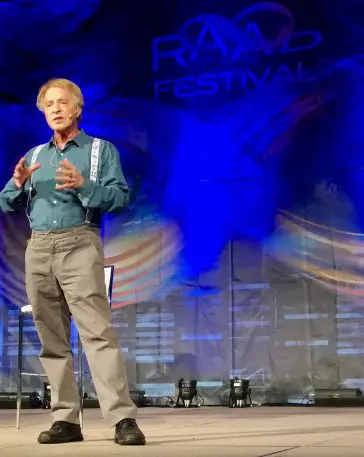
So, a few RAADfest presentations end with requests for research donations or what essentially feel like advertisements for clinics. “[We promise] clean outpatient rooms,” reads the last slide for a presenter who also owns a stem-cell therapy clinic.
Potential patients, much like audience members, have the means to pay for these experimental therapies. (Many indirectly hint to being multi-millionaires.) Eventually, claim longevity activists, as widespread tech advances, funded research will allow the masses to partake in such revolutionary science. Call it trickle-down biohacking economics.
Earlier this year, Life Extension Foundation cofounder and RAADfest speaker Bill Faloon made headlines for advertising a pay-to-play clinical trial that offered the elderly blood infusions from young donors. The fountain of youth trial, which showed promising results in mice, cost $285,000 to participate in. Young donors, however, were compensated just $750.
Not that participating in RAADfest comes entirely risk free: One physician here told me that doctors and scientists gamble with their reputation by coming to such a radical event. But there’s often no other way to progress beyond experimenting on mice.
While Strole hasn’t personally vetted all the therapies on display (“People are different and respond to different things,” he explains), he vouches that all are legal, though some are available only outside the U.S.
At RAADfest, “[People] have an alternative choice,” stresses Strole. “That’s the key.”
Outpacing death
Humanity may be far from cracking the immortality code, but there has been progress. Think of 1776, when the average life expectancy was just 35 years. By 1900, that number grew to 47.3 years. Soon after 2000, it inched past 77, reports the National Center for Health Statistics.
Our nation’s interest in staying healthier longer started with dietary supplements several decades ago and more recently morphed into organic foods and the wellness craze. Researchers confirm that Americans age 65 or older increased tenfold in the last century, with the elderly living substantially longer. The Centers for Disease Control and Prevention adds that fewer die today from major diseases compared to just 40 years ago.
“What we’re looking at is evidence that for the first time in human history, there’s a population-wide delayed effect of aging,” Bill Faloon tells a packed auditorium hall. He notes that the Food and Drug Administration recently cleared the Mayo Clinic to accelerate production of stem cells for clinical trials through automation. “We are winning the war against aging. [We] haven’t won it yet, but we’re winning it—battle by battle.”
There is certainly talk of immortality within these halls. At an expo booth for the Church of Perpetual Life, a nondenominational church for trans-humanists, officiator Neal VanDeRee says many of his congregants identify as atheists. In lieu of putting trust in God or a Bible, he explains, “We have faith in humanity.”
“We want to live on this planet and make it a better place for the next 1,000 years, if possible,” says VanDeRee.
So, is it all possible? Futurist Ray Kurzweil speaks of the escape velocity philosophy, which touts that, with scientific advancement, your body rejuvenates faster than its disintegrates. That way, you will always just be escaping death’s claws. To get to that point though, he says, stick around to 2050, when he believes science will take a quantum leap. Basically, live long enough to live forever.
Many of these immortalists, as they call themselves, have a counter-argument for any ethical alarm you might ring. Religious? God made us in his image, and if he’s immortal, then we should follow suit. Environmental? By the time they “overcome” death, society will have miraculously figured out how to house and feed all of humanity. But the most compelling argument seems to be that of self-determination: Who are you, they say, to claim yourself my executioner? Who gets to decide when I die?
For the majority of RAADfest members, immortality is not the driving force behind their attendance. They simply want to live better during their final chapter. They do not, as they’ve seen other family members, want to succumb to dementia or be confined to hospice care. Currently, 45% of people over the age of 85 today are frail, often suffering physical dysfunction and decreased mobility, reports the Journal of the American Geriatrics Society.
This population has experienced what mainstream medicine has to offer, namely 15 minutes in a doctor’s office and one too many prescriptions. The folks at RAADfest want another way.
“One of the things that scares all of the people that come here is we don’t want to age, and our brain doesn’t work,” says Stella Kalfas, 62. “We want to feel healthy. We want to go to the end without falling apart.”
Kalfas, who serves as president and CEO of the Mental Health Association of Greater Chicago, finds the conference empowering. She, like many of those she’s interacted with here, refuses to wait until she’s in her 80s to combat preventable illness and decay.
“It gives you hope,” she says. “And that’s really the big thing. It gives people hope that they’re not going to end up like their loved one.”
Not that she accepts everything at face value: She listens, does her homework, then follows up with questions: What was the sample size? Was it peer-reviewed? What were the complications?
Kalfas concedes that friends often look at her like she has “two heads” when she explains her interest in RAADfest. The bewilderment isn’t surprising; old people have been stereotyped a certain way—frail, meek, and willingly ready to march to a rumored afterlife. They’re not supposed to fight nature.
“We’re told that that’s the way we should be. We should die and allow the new to come in,” says Kalfas.
Trisha Campbell, 74, of San Antonio, Texas, says that at her first RAADfest, she assumed most attendees were people who were simply afraid to die. Now at her third conference, she admits she misjudged. These are envelope pushers learning how to help themselves, taking matters into their own hands. And they’re willing to think outside the box.
Campbell, an Army veteran, is looking for quality years, not necessarily more of them. She wants full physical and mental capability and thinks RAADfest is her best chance of finding out what’s out there.
“I believe this is the frontier of research,” says Campbell. “This is where it’s going.”
The extended frontier
Age-defying science has already seeped into mainstream circles. The National Institutes of Health reports that new drugs extend the healthy lifespan of mice. Calico, the secretive Google-backed research company, secured $1.5 billion to study age-related science. The American Heart Association is looking into Nicotinamide adenine dinucleotide (NAD+), the anti-aging coenzyme touted in longevity circles for years.
Some of these developments are coming to the market: Young blood transfusions specialist Ambrosia Medical plans to open its first clinic in New York City at the end of the year. You can also buy NAD+ in supplement format.
But for all the recent advancements, RAADfest presenters still speak with an urgency: It isn’t happening fast enough. Faloon points to Unity, a biotech company at the forefront of eliminating senescent cells, which are basically “zombie cells” related to dementia and age-related cognitive decline. The research has been centered on mice, though the first human trial is now under way. It, like many revolutionary therapies, will likely spend years attempting FDA approval.
“We don’t have time to wait,” Faloon implores the audience, to applause. “We’re all running out of time.”
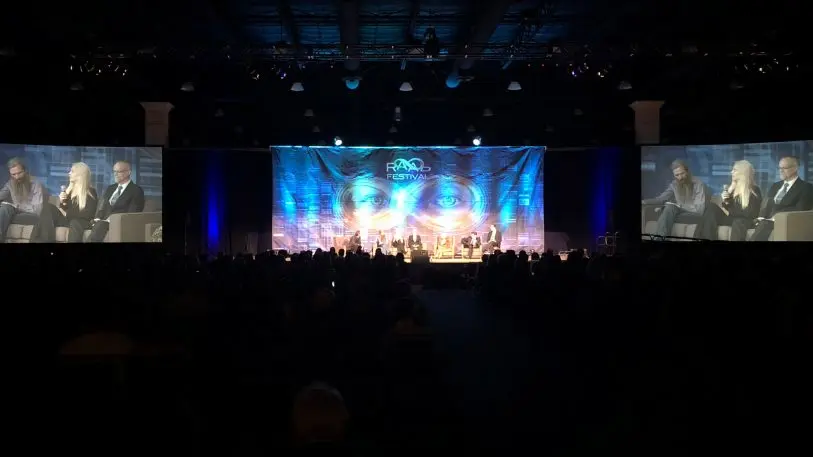
“The government isn’t fighting us as they used to,” he says, referencing the battle for stem-cell therapy. “We can’t let them stop us again.”
This past RAADfest was the largest one yet, with more than 30 different countries represented, leading organizers to contemplate going international. Strole plans to grow his network, an army if you will, who will keep funding studies and pressuring political leaders to take this sector more seriously.
His coalition compares itself to former forward-thinking groups that questioned the status quo—women’s equality, minority rights, even Vietnam War protesters—only to be widely accepted decades later. By the year 2050, people aged over 65 years will grow to an estimated 2 billion. This is a growing movement, and it only intends to grow stronger. There are now year-round events, retreats, and gatherings.
“We’ve got to escape this old way of being,” stresses Strole. “There’s nothing more ethical than moving to save lives.”
Recognize your brand’s excellence by applying to this year’s Brands That Matter Awards before the early-rate deadline, May 3.
